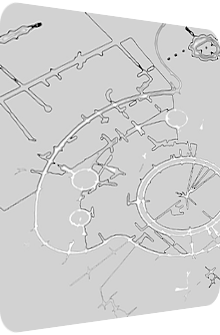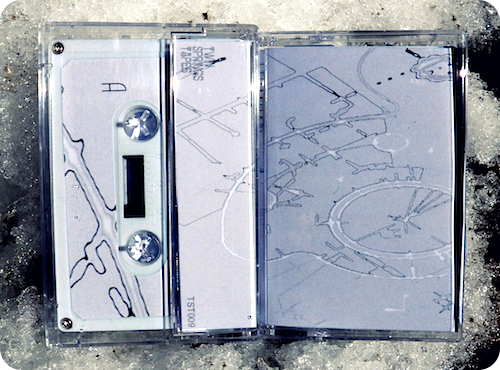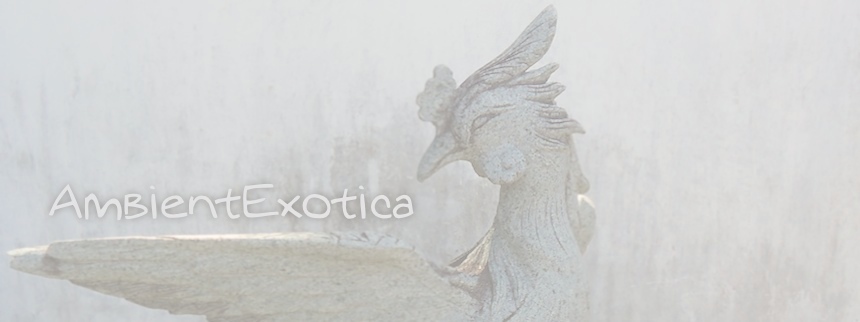
Le B'OO-Ray
V
2014
V is the title of the collaborative effort of Montreal’s multi-instrumentalist Le Berger aka Samuel Landry and Portland’s cellist The Oo-Ray aka Ted Laderas, and together they form the duo of Le B’OO-Ray. Undoubtedly one of the greatest moniker-related blendings in recent times that evoke a certain warmhearted humor, their three-part tape depicts a countermovement in this regard, as it is a more serious yet equally delightful affair. Released in February 2014 on Matthew Barlow’s Asheville-based Twin Springs Tapes and available to purchase and stream at Bandcamp, V is mercilessly torn – almost torn apart – by its antagonistic forces that do not manifest themselves during the first or second listening session already. Granted, it does not need a faux-erudite reviewer to point them out, but since they are poignant and, I believe, essential constituents rather than alatoric alacrities regarding the very nature of this particular tape, I am going to give a few insights about them over the course of this review. My impressions might be right (suuuure, buster). They might be horribly off track. But they are hopefully plausible and coherent. The project called Le B’OO-Ray, meanwhile, is no real cooperation as of yet, the gentlemen did not meet in the studio. Instead they are inspired by their own works, so that track one and three are composed by Le Berger whereas track two is handed out by The OO-Ray. Both artists are trained musicians and have an ear for each other’s particular techniques, timbres and ways of arranging the layers. V is what I would briefly call an artifact of the Drone genre, a description that will be further carved out, annihilated and then resurrected below. V is an intriguing tape harboring a mystery and many dichotomous tendencies. Now that we know this, let us dive deeper into its posssible meaning and mean possibilities.

A frostmodern world: A picture of V as frosted by label boss Matthew Barlow.
An icicle with galactosamine flavor: To Be Twice Put In Jeopardy
The above expression of a strangely-flavored icicle sounds unnecessarily witty, but regardless of its appearance, an intellectual stimulus is injected right from the get-go amid Le B’OO-Ray’s opener, composed by Le Berger and inspired by The OO-Ray. Superimposed undercurrents of vestigial frequencies, verdured veils and vertiginous airflows “erect the vihara,” to use an ecclesiastic euphemism that ends this list with a cheeky amount of v-words. Even the immediate opening phase is already heterodox: fade-in nay, in medias res yay. Helical glockenspiel bells – or reversely played processed vihuela afterglows – gyre around a strikingly lofty Drone piece, its interstices and moulds being covered by distant guitar infusions that are as sylphlike as they are somnolent. To Be Twice Put In Jeopardy feels like a shapeshifting cloudlet, and this has to do with the equally spheroidal field recording that graces the backdrop and nurtures the parallax feeling. Blotchy polka dots, horological ticks and chirping birds are held together by aerose legato tones. The first half of the piece is surprisingly lively and diaphanous, whereas the second half puts the focus on a hibernal efflorescence, a partially threnodic withdrawal charged with pristinely plinking scintillae and a Far Eastern fluxion. This encapsulation process makes the opener feel as argentine as Samuel Landry’s front artwork, its threads and cohesion as serpentined, circular or rectilineal as the inky junctions and shapes.
A saffron transmutation: A Witness Against Himself
The track title of the second offering may continue the tape’s bittersweet leitmotif that oscillates between portentous excoriation and ferocious ostracism (is there a difference?), but these dun-colored thoughts notwithstanding, there is no moment of crestfallen capitulation whatsoever. A Witness Against Himself sees the etiolated iciness of the opener transformed into cello strings which multiplex thermal heat and ligneous mélanges of sylvan rhizomes. Written by The OO-Ray and inspired by Le Berger, Ted Laderas offers a gradient of infinitesimal lugubriousness which is then captured by the droning backing strings. There is no real cleft or crevasse sewn into the track, but ebb-and-flow formations do materialize via the billow-like current of the performance. Brown and yellow tones occur before the inner eye. Saffron alright. Whether it is post-processing or not, there is one certain attribute that ameliorates the triptych’s centroid installment further: some tones sound like a dragon’s metallic exhalation, or to be less prosaic, the elasticized and soft clash of cymbals. These prolonged bursts evoke the feeling of listening to a distant Chinese gong, and believe it or not, this antediluvian percussion instrument which has been used to death can still sound grace- as well as meaningful in a delicate context. Whether the brazen vigor is a figment – or better still: a mirage – in-between the humidity and heat of the arrangement is for Ted Laderas to know and for the reviewer to not find out, but these incisions aside, A Witness Against Himself is too apocalyptic a title in the given context. Or is it?
Polyphonie toujours: Life, Liberty
This third and final piece – envisioned by Le Berger, inspired by The OO-Ray – may feel like a mere appendix with its duration of less than two minutes. However, it manages the link or point of contact to the opener and its crystalline purity. As such, Life, Liberty maintains its contemplative erethism qua its granular floes with their cavalcades of lanthanoid colors and designedly austere two-tone piano prongs which are curiously entwined in the melancholic scenery and yet protrude the partially rubicund circumambience with their staggering strength. This is Samuel Landry’s take on the heterogenous Modern Classical movement coupled with a modicum of loop-based Pop Ambient. The track title imposes yet another seemingly mocking audacity, for this little theme is actually harmed by a strict direction of march, bewailing overtones as well as a loop-driven corset that is not overcome over the short course of its runtime. Polyphonic and tragic, it emanates the synergies and vicissitudes of life, and if you roll your eyes in the face of the bad aftertaste this sentence provides, then you might understand what Le Berger might hint at. Liberty? Not in these surroundings and climes. Whereas the other pieces sported their fair share of recurrent patterns – or else they would not be called patterns in the end –, Life, Liberty makes a bold, vivacious, even flamboyant statement in its title… followed by the shortest and most repetitive incident. Am I hearing Vincent Price laugh?
V stands for virtuosity, for it is created by two trained and skilled artists. It stands for vulture, as bird-accentuated field recordings appear in one of its pieces. Alternatively, and all jokes aside, it can potentially stand for the number five due to being based on the extensive use of the 5th interval throughout the tape as Le Berger revealed. But let’s forget the album title for a moment, as it is the three minimal pieces and their rich alluvial soils which form but one of the tasteful opposing forces among the plastic-alloyed reel. V hides a dark and probably highly uneasy secret, an enigmatic foe who is following the potential victim (that v again!) wherever he goes. One possible explanation to the cryptic puzzle is delivered by the track titles which do not seem to make an awful lot of sense once they are attached to the actual soundscapes, but become aquiver with meaning sooner rather than later: it is the listening I itself that is its own quint-esssential enemy, and granted, if this were indeed the case, Le B’OO-Ray’s aural aurum autumn would not only fit in the postmodern discourse of a human’s innermost decay in general, but also the shadier material that is presented by Matthew Barlow and his Twin Springs Tapes label time and again, be it Derek M Poteat’s self-explanatory Guilt, St. Atom Heart’s Hauntology haze Kleos or the label owner’s team-up with Andy Loebs on the drum-infested cymbalirium and ode to Twin Peaks called Northwest Passage (all released in 2013). Le B’OO-Ray’s V does not necessarily have much in common with these entities which are themselves highly distinctive to begin with, but the gap between the soothing dioramas, their ominous subthemes and quasi-incompatible titles offer too glaring a paradox to not thematize them here. Drone fans and followers of the electro-acoustic movement and those who favor a small amount of dreamy pentatonicism in their music ought to invest(igate). Oh, and remember, every impression in this review might be totally false. Except for one thing: V stands for Vaporwave. Derp.
Further listening and reading:
- You can stream and purchase V at Bandcamp.
- I sense a gentlemen’s club at Twitter: @le_berger, @ooray and @TwinSpringsTps.
Ambient Review 322: Le B'OO-Ray – V (2014). Originally published on Mar. 4, 2014 at AmbientExotica.com.
